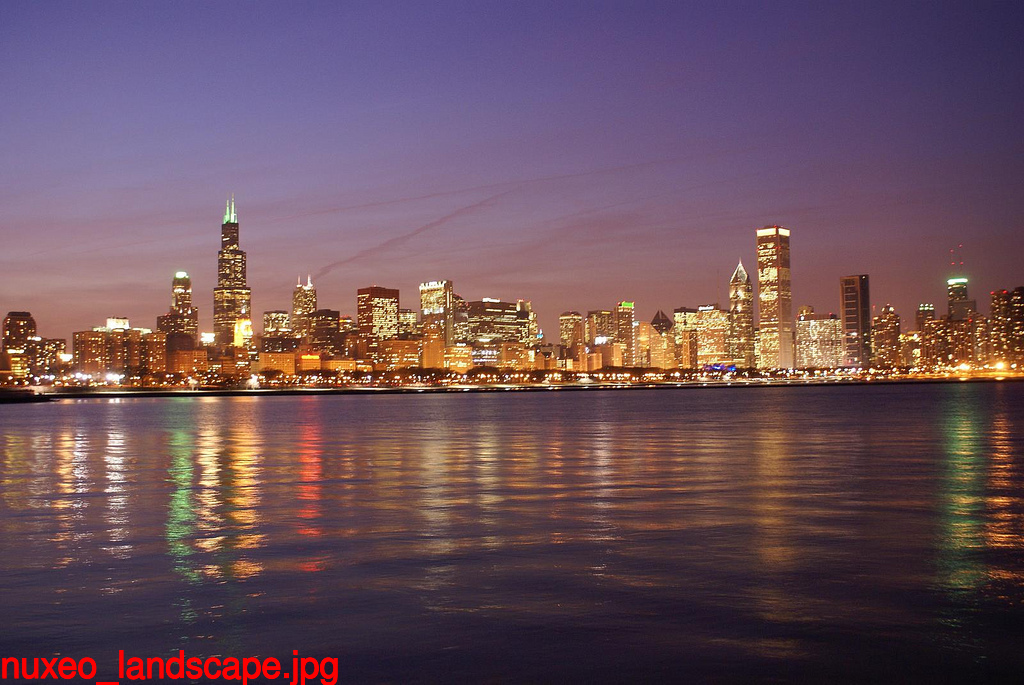Picture conversions are used to fill the picture views (stored in the picture:views field of a document having the Picture facet). The default ones are: Thumbnail, Small, Medium, FullHD, OriginalJpeg.
Picture conversions are simple XML contributions done on the pictureConversions extension point of the org.nuxeo.ecm.platform.picture.ImagingComponent component.
Picture conversions are working only on documents having the Picture facet.
Available since 7.1.
Contributing a New Picture Conversion
Resizing a Picture
Let's add a new picture conversions called Large that will resize the picture to 800px max.
<extension target="org.nuxeo.ecm.platform.picture.ImagingComponent"
point="pictureConversions">
<pictureConversion id="Large" description="Large image" tag="large"
maxSize="800" order="0" chainId="Image.Blob.Resize" />
</extension>
Noteworthy Attributes
maxSize: The maximum size of the width or height of the image (depending of the bigger one on the original image). Not setting themaxSizewill put the original width and height as expected values.order: The order of this picture conversion in the final list of picture views, smaller first.chainId: the Automation chain associated to this picture conversion. Here we use the default available chainImage.Blob.Resizethat will just resize the image according to themaxSizeattribute. If thechainIdattribute is not filled, the originalBlobwill be returned and use for the generated picture view.
Notes on the chainId attribute
You can put your own chain here to do whatever you want. Just note the following:
- The chain must take a
Blobas input and return aBlobas output (this one will be saved as the generated picture view). - The chain takes a
parametersparameter which is a map containing the expected values computed by theImagingService(width,height,depthandconversionFormat). - The picture document, if any, on which the conversion is done is stored in the
Contextas thepictureDocumentvariable. - The chain is run outside any
Transaction/CoreSessionbecause a conversion could be long and should be done outside anyTransactionto avoid timeouts. If you need to open aCoreSessionyourself, you can use theContext.RunFileOperationoperation with the parameternewTxset totrueto start a new Transaction, and then theAuth.LoginAsoperation to open aCoreSession.
Watermarking a Picture
As a sample, let's see how we can retrieve a text to use as a watermark from the picture document.
Contribute an XML extension to register a command line that will watermark the image:
<extension target="org.nuxeo.ecm.platform.commandline.executor.service.CommandLineExecutorComponent" point="command"> <command name="watermarkWithText" enabled="true"> <commandLine>convert</commandLine> <parameterString>#{sourceFilePath} -gravity #{gravity} -fill #{textColor} -stroke #{strokeColor} -strokewidth #{strokeWidth} -pointsize #{textSize} -annotate #{textRotation}x#{textRotation}+#{xOffset}+#{yOffset} #{textValue} #{targetFilePath} </parameterString> <installationDirective>You need to install ImageMagick. </installationDirective> </command> </extension>Contribute an XML extension to register a converter that uses our new
watermarkWithTextcommand line.<extension target="org.nuxeo.ecm.core.convert.service.ConversionServiceImpl" point="converter"> <converter name="watermarkWithText" class="org.nuxeo.ecm.platform.convert.plugins.CommandLineConverter"> <sourceMimeType>image/*</sourceMimeType> <parameters> <parameter name="CommandLineName">watermarkWithText</parameter> </parameters> </converter> </extension>
<sourceMimeType>image/*</sourceMimeType> in the example, but you can specify more than one).
This can be disabled (not recommended) by setting the nuxeo.convert.enforceSourceMimeTypeCheck configuration parameter to false. (See this JIRA ticket for more details)
Create a chain that will be used for the picture conversion, getting the text from the
pictureDocumentand call the registeredwatermarkWithTextconverter to watermark the image. Here, for the example, we watermark the title of the document on the image:WatermarkChain- Blob.RunConverter: converter: watermarkWithText parameters: textValue: "@{Context[\"pictureDocument\"].getPropertyValue(\"dc:title\")}" targetFileName: Watermarked gravity: SouthWest textColor: Red strokeColor: Red strokeWidth: "1" textSize: "36" textRotation: "0" xOffset: "0" yOffset: "0"Add a new picture conversion that will watermark the image:
<extension target="org.nuxeo.ecm.platform.picture.ImagingComponent" point="pictureConversions"> <pictureConversion id="Watermark" description="Watermarked image" tag="watermark" order="0" chainId="WatermarkChain" /> </extension>You should end up with something like this on your instance:


You can now click on
 on the Watermark line to download the watermarked picture:
on the Watermark line to download the watermarked picture:


If you need to open a
CoreSessionto retrieve a document, for instance the parent document which will hold the watermark text, you will need two chains, one opening a Transaction / CoreSession, and another one doing the watermarking.First, create a chain that will retrieve the text, and put it in the
Context:GetWatermarkTextChain- Blob.Push - Auth.LoginAs: {} - Document.Fetch: value: "@{Context[\"pictureDocument\"].parentRef}" - Context.SetVar: name: watermarkText value: "@{Document[\"myparentschema:watermarkText\"]}" - Blob.PopNow, we need the chain that will be used for the picture conversion, getting the text from the
Contextand call a custom operation that will watermark the image:WatermarkChain- Context.RunFileOperation: id: GetWatermarkText isolate: "false" newTx: "true" rollbackGlobalOnError: "true" - WatermarkOperation: watermarkText: "@{Context[\"watermarkText\"]}"
Filtering Picture Conversions
Picture conversions can be filtered so that you can choose which picture conversions should be executed on a given document. The filtering is done through standard filters we already use in the Nuxeo Platform.
principal, currentUser or coreSession. You cannot access the Seam beans as the conversion is done in a worker.
Let's say we want to execute the previous Watermark picture conversion only on documents that have their dc:source value to MyCompany and their dc:language value not equals to english.
First, contribute the filters:
<extension target="org.nuxeo.ecm.platform.actions.ActionService" point="filters"> <filter id="grantMyCompany"> <rule grant="true"> <condition>#{currentDocument.dc.source == "MyCompany"}</condition> </rule> </filter> <filter id="denyEnglish"> <rule grant="false"> <condition>#{currentDocument.dc.language == "english"}</condition> </rule> </filter> </extension>Then associate the filters to the picture conversion by updating the picture conversion contribution:
<extension target="org.nuxeo.ecm.platform.picture.ImagingComponent" point="pictureConversions"> <pictureConversion id="Watermark" description="Watermarked image" tag="watermark" order="0" chainId="WatermarkChain"> <filters> <filter-id>grantMyCompany</filter-id> <filter-id>denyEnglish</filter-id> </filters> </pictureConversion> </extension>
